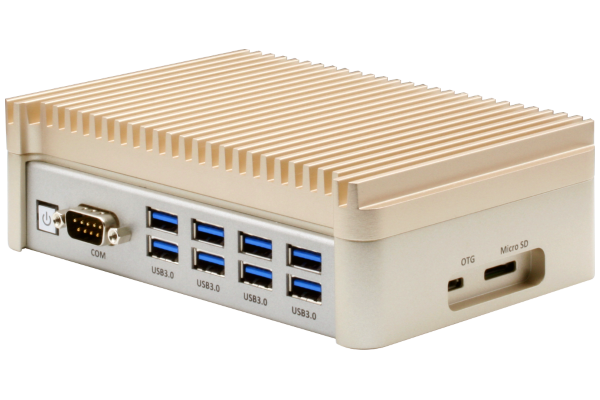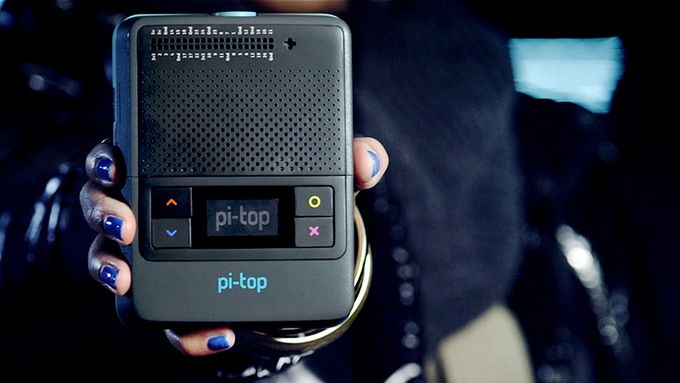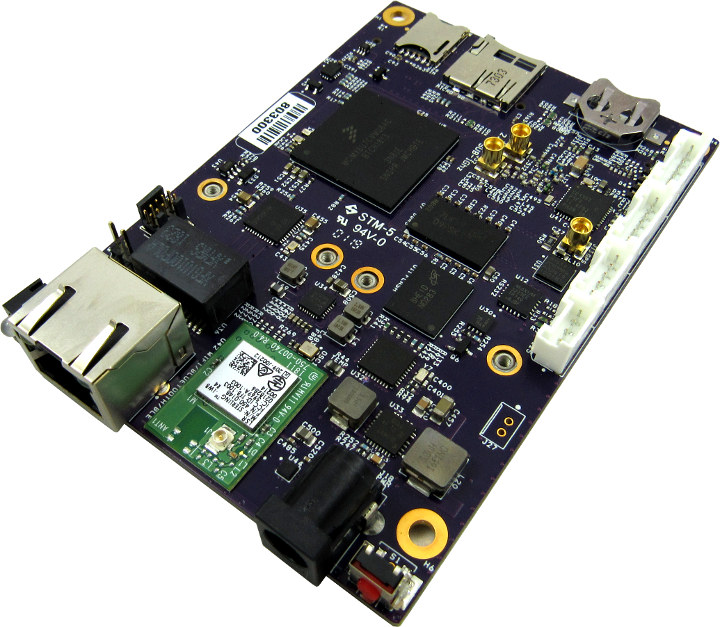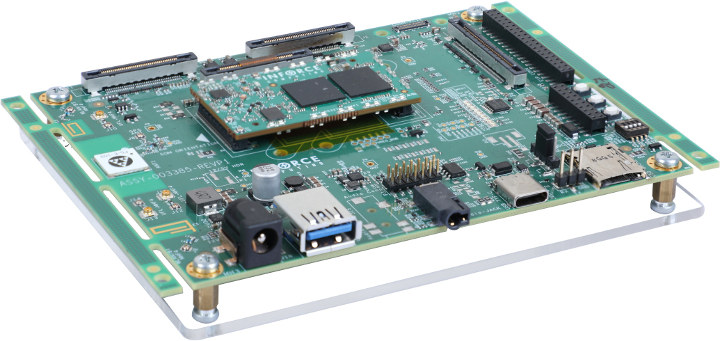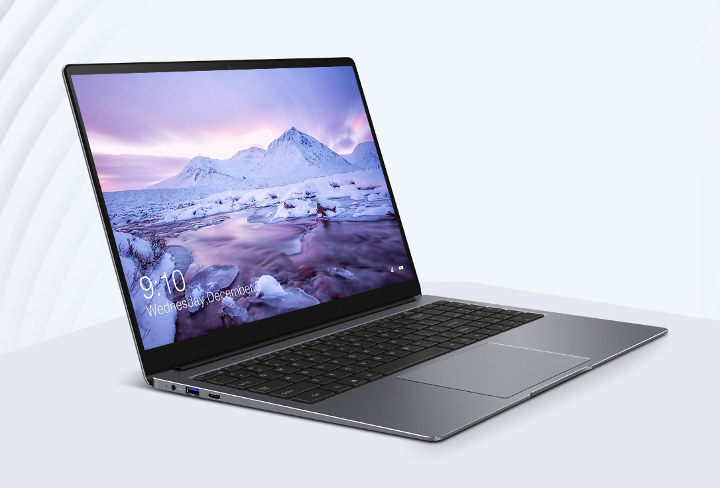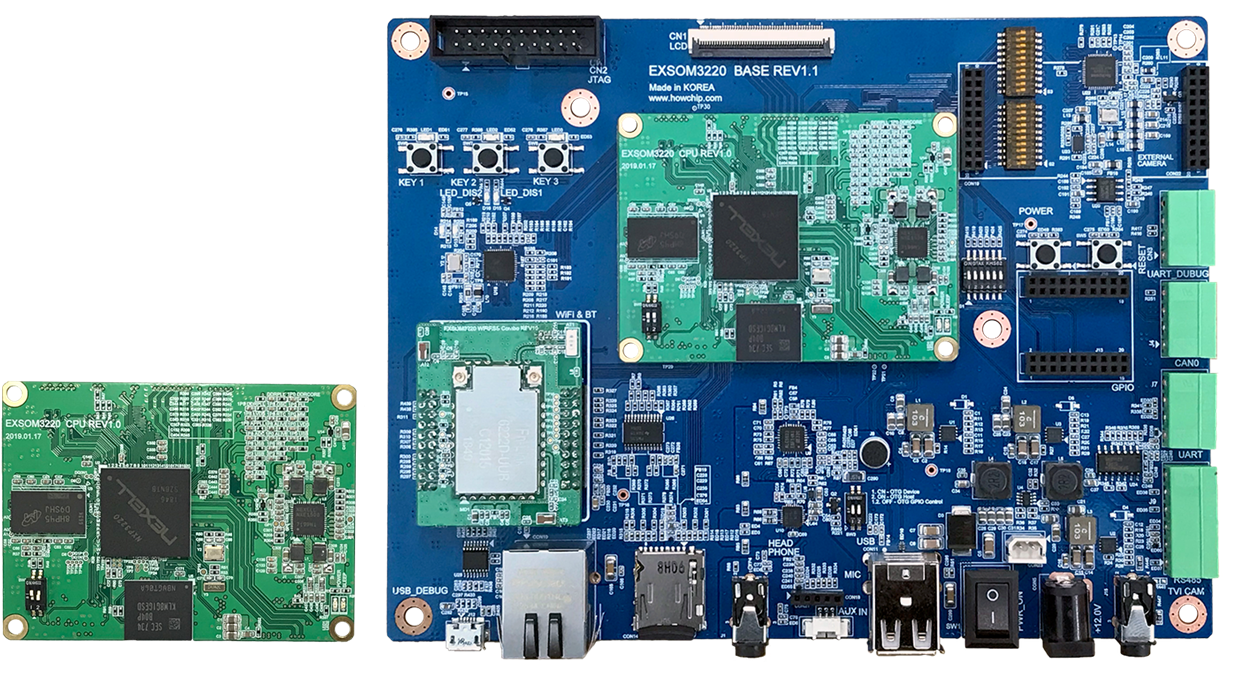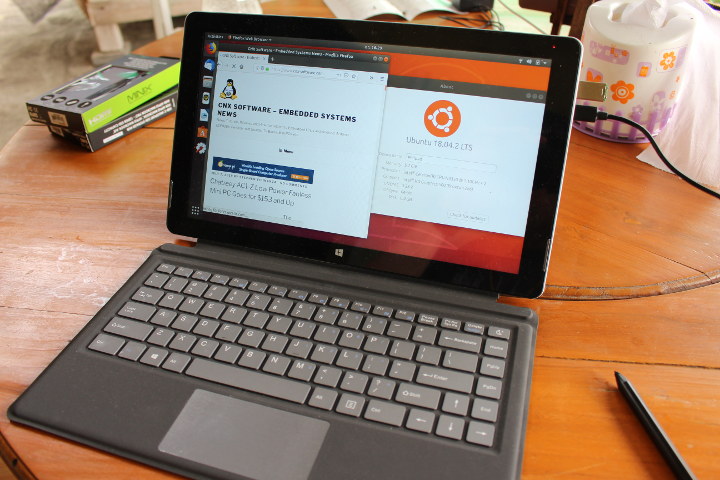The new compact embedded solutions’ addition to the BOXER-8100AI family is specially designed for artificial intelligence (AI) support. According to its makers, AAEON, it has a configuration of eight USB 3.0 ports made available through four USB controllers chips. This makes it perfect for a wide range of computer vision applications, some of which are visual inspection, quality control, and facial recognition. Now, each USB chip controls a pair of USB 3.0 ports. By dedicating one chip to one pair of ports, each chip handles less data traffic overall. This also improves bandwidth from connected devices and allows the BOXER-8150AI to maximize speeds and framerates of AI image processing. The product is currently in stock and available for purchase on AAEON online store for $1,142.00. Key Features of BOXER-8150AI Nvidia TX2 Module HMP Dual Denver 2 + Quad ARM A57 8GB LPDDR4 32GB eMMC 5.1 HDMI 2.0 8x USB […]
pi-top[4] Raspberry Pi 4 based mini PC has launched on Kickstarter for $199
The announcement about the pi-top [4] came out a short time ago, as a portable mini-pc running the Raspberry Pi 4 board, and plans of package deals for backers on Kickstarter. The campaign started on July 9 2019 and was fully funded within 4 hours. Pi-top has now set a new goal featuring several price packages, each with features, applications and components that expand on what was reported in the original article covering the pi-top [4] mini-pc. The Main Campaign and Company Pi-top is based in Austin and Brownsville Texas. They produce hardware, software and project kits based around the Raspberry Pi family of boards. The latest device is an expandable and multi-purpose platform mini-PC based on the Raspberry Pi 4, and enhanced by sensors, LED’s, components and software. The Kickstarter campaign has already been funded, and there are now a stretch goal and three packages being offered. The pi-top […]
Gateworks Ventana GW5910 SBC Targets WiFi, BLE & Sub-1GHz IoT Gateways
Freescale/NXP i.MX6 based Gateworks Ventana single board computers have been around at least since 2013 and were initially targeting networking processing applications for the industry. They could be used into all sort of gateways with cellular or WiFi connectivity for instance, thanks to the presence of mini PCIe sockets. But the latest Gateworks Ventana GW5910 SBC does not exclusively relies on mini PCIe cards for wireless connectivity, as it includes an onboard Laird Sterling 802.11b/g/n WiFi & Bluetooth module, as well as optional TI CC1352P dual-band Wireless MCU supporting Sub-1GHz and 2.4GHz RF, and an optional on-board u-blox GPS module, which should lower the total cost compared to solutions with mini PCIe cards. Ventana GW5910 specifications: SoC – NXP i.MX6 Dual Core Arm Cortex-A9 SoC Processor @ 800MHz System Memory – 512MB DDR3-800 SDRAM Storage – 256MB Flash System Memory, microSD card slot, mSATA socket Connectivity Gigabit Ethernet Port Onboard […]
Inforce Introduces Snapdragon 660 & 845 Modules with On-Device AI
Inforce Computing has just launched two new pin-compatible system-on-modules, namely Inforce 6502 and Inforce 6701, powered by Qualcomm Snapdragon 660 & Snapdragon 845 SoC respectively. In their newsletter, the company claims those are their first modules with on-device AI capabilities with the Snapdragon 660 enabling “advanced visual computing, enhanced graphics and on-device machine learning capabilities”, while the more powerful Snapdragon 845 is better suited for “immersive multimedia experiences including optimized AI performance for a more responsive, power-efficient user- experience and capture of cinema-grade videos in UHD@60fps resolution. Inforce 6502 Snapdragon 660 SoM Specifications: SoC – Qualcomm Snapdragon 660 with 8-core Kryo 260 processor, Adreno 512 GPU, Qualcomm Hexagon 680 DSP with Hexagon Vector eXtensions (HVX) for Caffe2 and Tensorflow System Memory & Storage – 3GB LPDDR4, Dual-Channel + 32GB eMMC flash in single eMCP package Connectivity Bluetooth 5.0 + Wi-Fi 5 802.11ac 2×2 with MU-MIMO and Dual Band Simultaneous (DBS) […]
Chuwi LapBook Plus Apollo Lake 4K Laptop Sells for $440 (Promo)
A little over two years ago, I reviewed Chuwi LapBook 14.1 Apollo Lake laptop with Windows 10, but it happened to run Ubuntu 17.04 fairly well, until the company made a major redesign of the laptop a few months later, and updated the BIOS to disable the Linux option. So I would not recommend Chuwi laptop if you’d ever want to run a Linux distribution, but if you’re after a affordably priced laptop with 4K (3840×2160) display, the upcoming Chuwi LapBook Plus laptop, also based on an Apollo Lake processor, may be worth a look. Chuwi LapBook Plus specifications: SoC – Intel Atom x7-E3950 quad core Apollo Lake (Embedded) processor @ 1.6 GHz / 2.0 GHz (Turbo) with Intel HD Graphics 505,up to 500MHz; 12W TDP System Memory – 8GB LPDDR4 (dual-channel) Storage – 256GB SSD, plus M.2 2280 socket for optional SATA SSD Display – 15.6″ 4K HDR display […]
Howchip Introduces Scorpion 3 & Scorpion 5 Boards Powered by Nexell Processors
Howchip has announced 2 development boards based on Nexell processors. Even though pricing is not available yet for these boards, we can now know their main features. Both development boards have been launched as COM & carrier development kits. Scorpion 3 is mainly focused for developments where a powerful dual-core Arm Cortex-A7 NXP3220 featured with Linux 4.14 can be enough, and Scorpion 5 seems to be focused for applications which may have more intensive requirements, for instance in terms of user interface, being based on a quad-core Arm Cortex-A9 NXP4330Q featured with Android Nougat and with UI specific features like 3D-Graphics Accelerator. Even though there is not so much information, Howchip also announces as “coming soon” the Scorpion 1 board, based on Exynos i T200 as an integrated IoT solution. Howchip Scorpion 3 Howchip Scorpion 3 is a great embedded computer in a board whose form factor is only 68x50mm. […]
Debian 10 “Buster” Released
If you’re a recent owner of a Raspberry Pi 4 SBC, you should have had an early taste of Debian 10 “Buster”, since the Raspberry Pi Foundation decided to release their Raspbian “Buster” image before the actual release in order to lower software development costs. Debian developers have only just announced the release of Debian 10 “Buster”. The new version of Debian supports various desktop environments including Cinnamon 3.8, GNOME 3.30, KDE Plasma 5.14, LXDE .99.2, LXQt 0.14, MATE 1.20, and Xfce 4.12. Besides the official announcement Debian also posted tidbits on their Twitter feed, where we learn for example that “Debian 10 buster has 28,939 source packages with 11,610,055 source files”. Officially supported architectures for Debian 10 include i386 and amd64 for x86 targets, arm64, armel and armhf Arm architectures, as well as various other architectures including MIPS (mips64el, mipsel…), PowerPC (ppc64el), and IBM System z (s390x). One notable […]
Testing Ubuntu 18.04 on XIDU PhilPad 2-in-1 Hybrid with Touchscreen
So I’ve recently completed the review of XIDU Philpad 2-in-1 hybrid with Windows 10. The laptop features a 13.3″ touchscreen and support stylus, and I was intrigued whether those would work in Ubuntu 18.04. So I flash the Ubuntu 18.04.2 Desktop ISO to a flash drive and installed Ubuntu to another USB flash drive to give it a try with persistent storage. Note that while it’s OK for testing, running Ubuntu 18.04 from a USB flash drive is very slow, so it’s not recommended. The good news is that you can enter the BIOS by pressing either Esc or Del at boot time, an option is available to select Linux in the BIOS. I could then select Partition 1 in my bootable flash drive, and install Ubuntu 18.04 on the other drive with some patience, and everything works smoothly, albeit slowly due to using a cheap USB flash drive during […]

